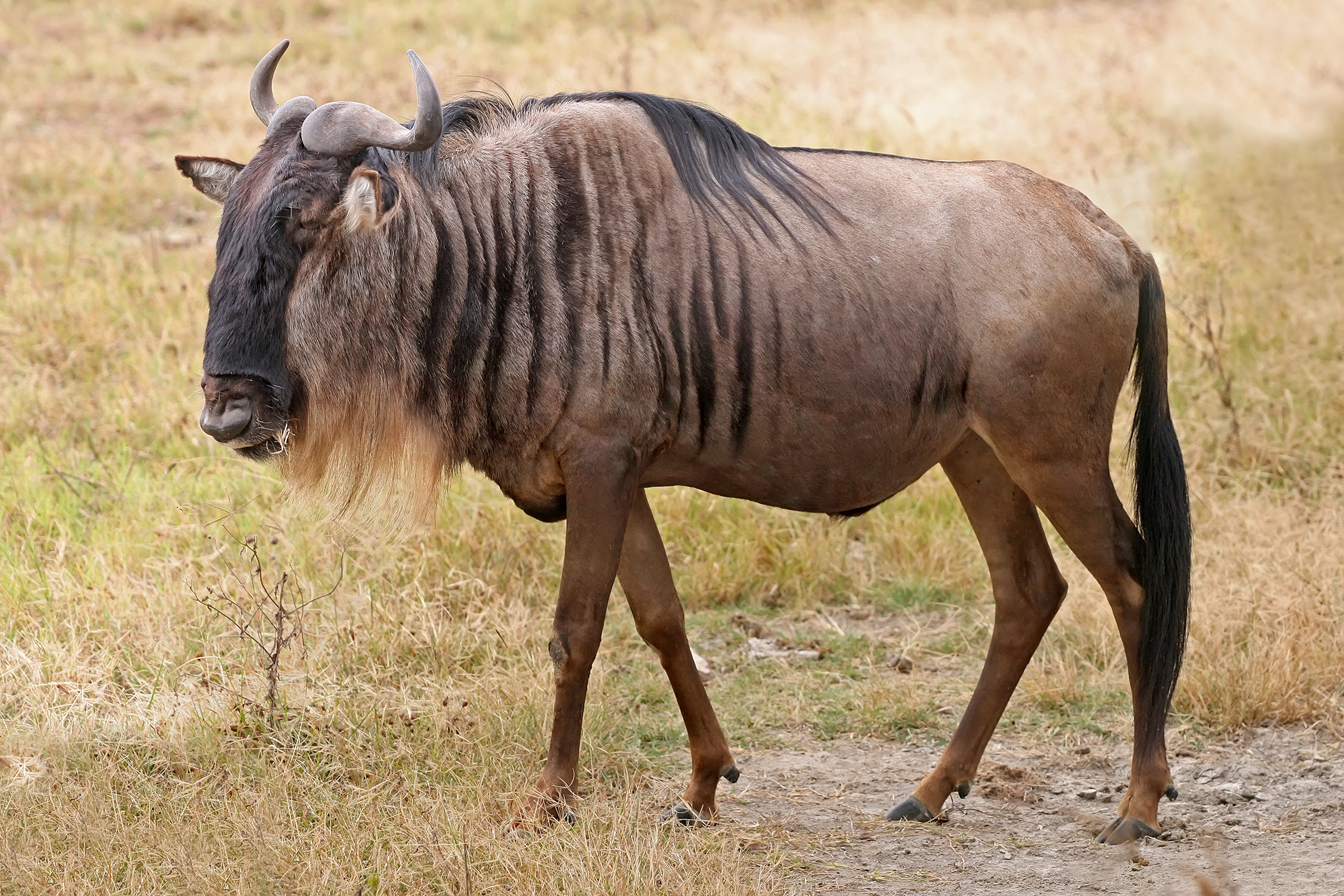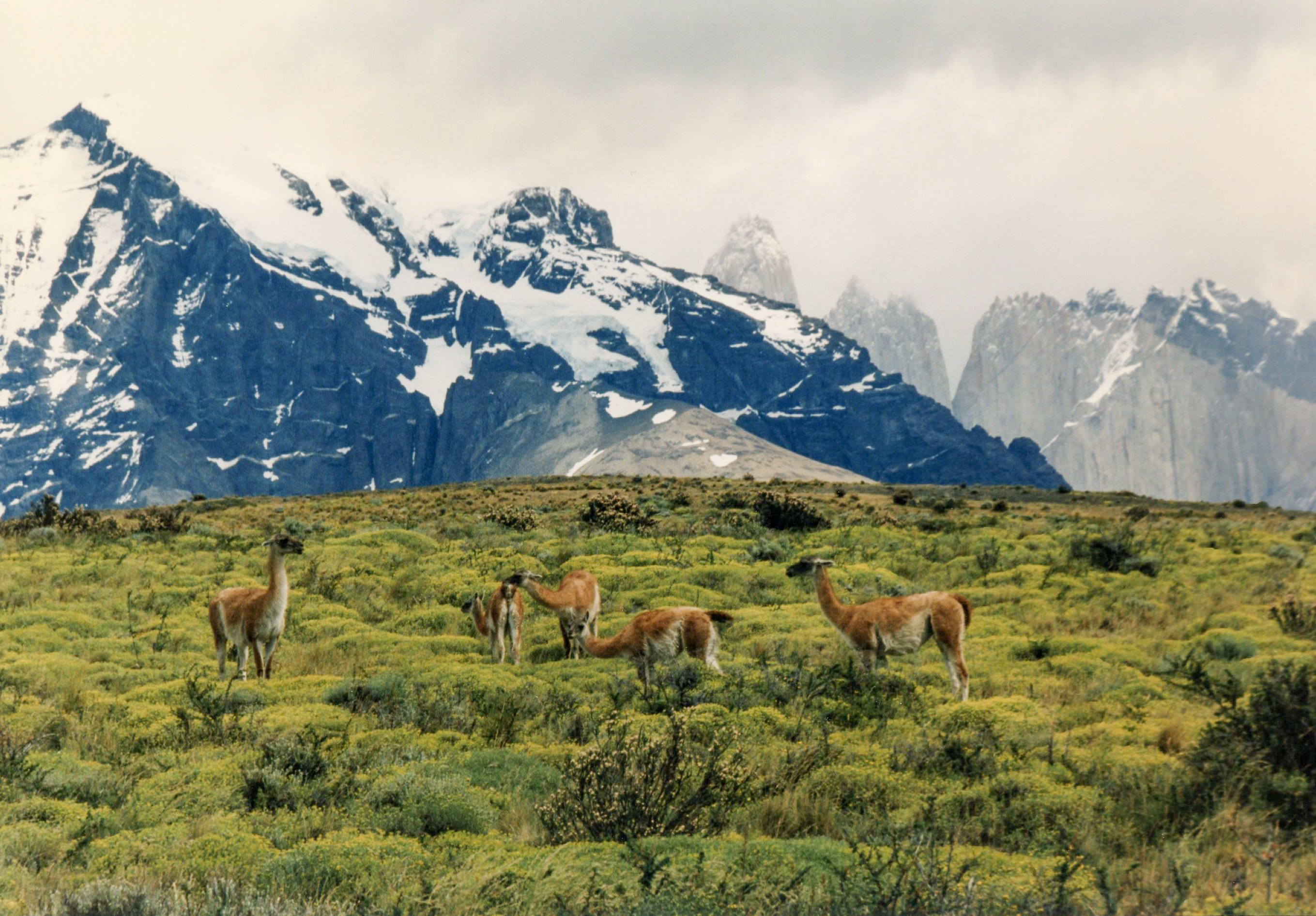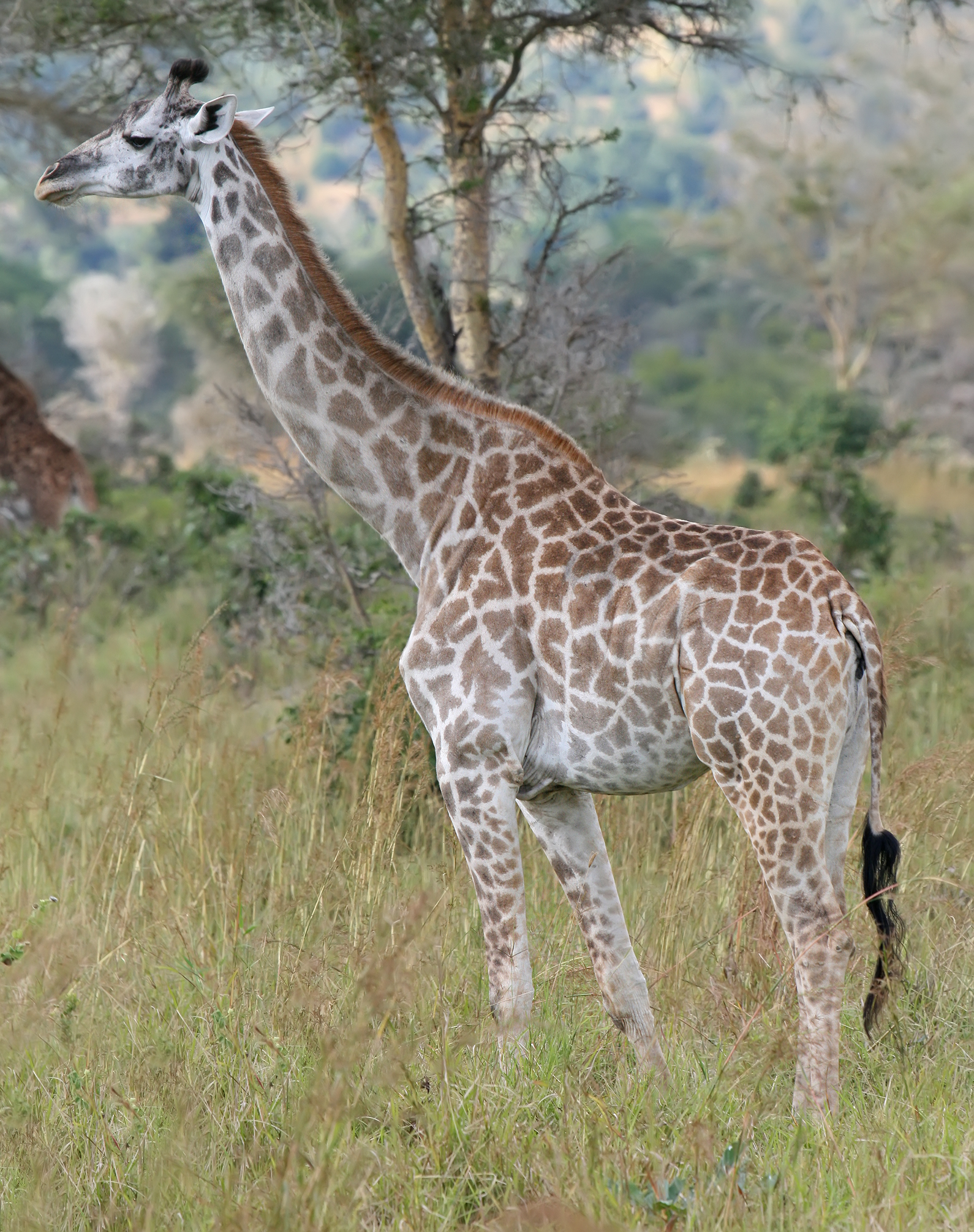Artiodactyla: Even-Toed Ungulates
Continuing with the personal-thought-project of listing my favorite animals (started with Anura) I stumbled upon a group that would not really rank very high on my list of favorite favorites. The Artiodactyla are a boring order of mammals. They have even-toed hoofs. (There are also some odd-toed ungulates like horses, zebras and rhinos, but they don’t go on this list.) When I go to the zoo, most of these are ones that I breeze past on the way to the interesting animals. There are about ten extant families, four of which (Suidae, Tayassuidae—the pigs—and Moschidae and Tragulidae—some deer) don’t represent on this list. There are some however that I like, that I know, and that I would include among my favorites:
7. Blue Wildebeest Connochaetes taurinus
Bovidae is the large family composed by the cows, the sheep and the antelope. Not particularly exciting animals. The Gnu, however, is an impressive animal. Also known as the Wildebeest, it is among the most dangerous animals in Africa. (Not quite in the top six, but number two is another Artiodactyla.) The impressive thing about this species is their incredible migration. If you get a chance to see it—even on film—check it out.
6. American Wapiti Cervus canadensis
The Cervidae make up the family of the true deer. They are somewhat indistinguishable. The most impressive may be the Moose or perhaps the Caribou, but the one I find the most stunning is the American Wapiti, more commonly known as the Elk. Growing up in Colorado, you were always on the lookout for these instead of the plain old White Tail. I have vivid memories of seeing one up on the side of a mountain one camping trip.
5. Guanaco Llama guanicoe
Camelidae are an interesting group. My favorites are the sorts without the famous humps, the Llamas, alpacas and… my special Guanacos. Among other places, they are quite common in one of the most uncommonly beautiful corners of this earth: Torres del Paine National Park.
4. Pronghorn Antilocapra americana
A genus in a family all its own (Antilocapridae), these are not really antelope like people call them. They are, however, the fastest land mammals in the western hemisphere and after huge fires in Yellowstone they moved south and we briefly called the same place home. I still have a Pronghorn horn on my bookshelf.
3. Hippopotamus Hippopotamus amphibious
Hippopotamidea is composed of two species one of which inspires more fear than lions and alligators. Hippos also are characterized by the way that they pee backwards; something my kids and I got to be impressed by at the National Zoo in D.C. Boy can they pee! (They pass gas quite impressively first thing in the morning as well.)
2. Pudu Pudu puda
(and Pudu mephistophiles) Another Cervidae, this one is the smallest true deer in the world and comes from Chile. I saw one in southern Chile in the yard of a restaurant that was somewhat tame. The other Chilean deer that I never managed to see is the Huemul (Hippocamelus bisulcus) but they are truly endangered so that would have been something.
1. Giraffe Giraffa camelopardalis
Giraffidae has to have my favorite Artiodactyl, and it is not a very unique choice. But how can you not pick the giraffe? They are tall, beautiful, strange and amazing. The Okapi (Okapia Johnstoni) might be more unusual and rare but it just isn’t as impressive.
7. Blue Wildebeest Connochaetes taurinus
Bovidae is the large family composed by the cows, the sheep and the antelope. Not particularly exciting animals. The Gnu, however, is an impressive animal. Also known as the Wildebeest, it is among the most dangerous animals in Africa. (Not quite in the top six, but number two is another Artiodactyla.) The impressive thing about this species is their incredible migration. If you get a chance to see it—even on film—check it out.
6. American Wapiti Cervus canadensis
The Cervidae make up the family of the true deer. They are somewhat indistinguishable. The most impressive may be the Moose or perhaps the Caribou, but the one I find the most stunning is the American Wapiti, more commonly known as the Elk. Growing up in Colorado, you were always on the lookout for these instead of the plain old White Tail. I have vivid memories of seeing one up on the side of a mountain one camping trip.
5. Guanaco Llama guanicoe
Camelidae are an interesting group. My favorites are the sorts without the famous humps, the Llamas, alpacas and… my special Guanacos. Among other places, they are quite common in one of the most uncommonly beautiful corners of this earth: Torres del Paine National Park.
4. Pronghorn Antilocapra americana
A genus in a family all its own (Antilocapridae), these are not really antelope like people call them. They are, however, the fastest land mammals in the western hemisphere and after huge fires in Yellowstone they moved south and we briefly called the same place home. I still have a Pronghorn horn on my bookshelf.
3. Hippopotamus Hippopotamus amphibious
Hippopotamidea is composed of two species one of which inspires more fear than lions and alligators. Hippos also are characterized by the way that they pee backwards; something my kids and I got to be impressed by at the National Zoo in D.C. Boy can they pee! (They pass gas quite impressively first thing in the morning as well.)
2. Pudu Pudu puda
(and Pudu mephistophiles) Another Cervidae, this one is the smallest true deer in the world and comes from Chile. I saw one in southern Chile in the yard of a restaurant that was somewhat tame. The other Chilean deer that I never managed to see is the Huemul (Hippocamelus bisulcus) but they are truly endangered so that would have been something.
1. Giraffe Giraffa camelopardalis
Giraffidae has to have my favorite Artiodactyl, and it is not a very unique choice. But how can you not pick the giraffe? They are tall, beautiful, strange and amazing. The Okapi (Okapia Johnstoni) might be more unusual and rare but it just isn’t as impressive.






Comments
Post a Comment